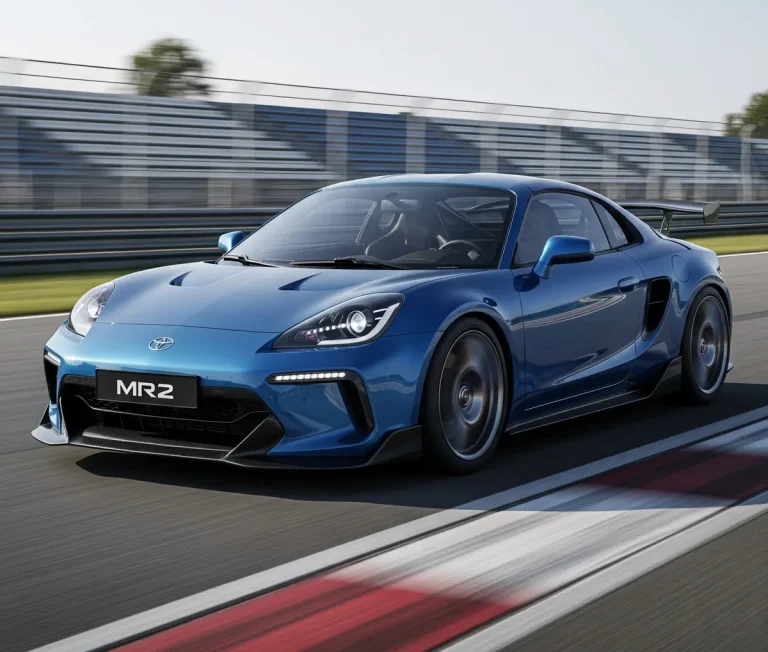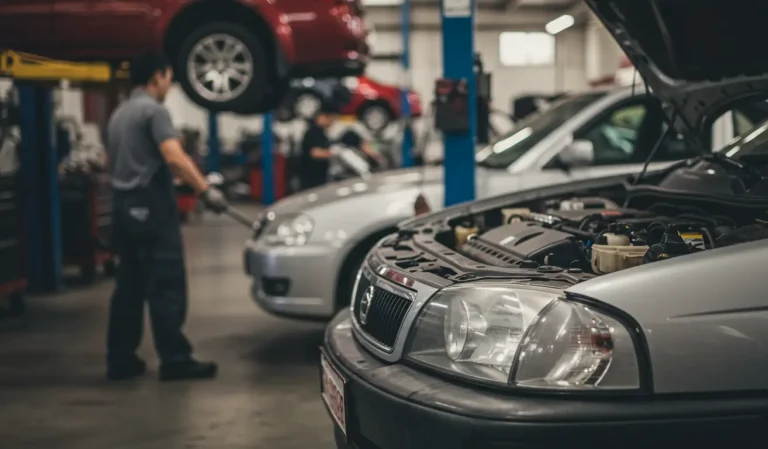Mazda CX5 Years to Avoid and the Most Reliable Models to Buy
The Mazda CX-5 has earned its spot as a top contender in the compact SUV market. Known for its sporty handling, upscale design, and impressive fuel efficiency, it’s a favorite among drivers who want practicality without sacrificing style. But like any vehicle, not every model year delivers the same level of quality.
If you’re in the market for a used CX-5, knowing which years to avoid—and which ones to target—can save you from costly mistakes. Let’s break it down.

Mazda CX5 Years to Avoid: Why It’s Important to Identify Problematic Models
The Mazda CX-5 is known for its sharp design, fuel efficiency, and smooth ride quality. However, like many vehicles, not every model year has maintained the same standard of reliability. Some years have been marked by recurring issues that can affect your long-term ownership experience.
Certain model years—particularly earlier ones—have seen higher rates of engine problems, braking system complaints, and infotainment glitches. While these models may seem affordable upfront, they often lead to increased repair costs and frustration over time. Choosing one of these problematic years can result in frequent breakdowns and diminished resale value.
By understanding which years are more prone to issues, you can make a more informed buying decision and avoid unnecessary maintenance expenses. The goal is to help consumers easily compare Mazda CX-5 model years and choose versions known for improved reliability, safety, and performance on the road.
In the sections that follow, we’ll highlight the specific model years to avoid, explain the issues most commonly reported by owners, and point you toward the more dependable versions of this popular crossover.
⚠️ Common Mazda CX-5 Problems Across Multiple Years
Even Mazda’s reputation for reliability can’t shield every CX-5 from persistent problems. While many owners enjoy years of trouble-free driving, some recurring issues have appeared across multiple model years. If you’re shopping for a used CX-5 or currently own one, it’s worth being aware of these common concerns.
🛢️ Excessive Oil Consumption
One of the most frequently cited complaints about early CX-5s, especially the 2013 and 2014 models, is excessive oil consumption. Owners reported that the 2.0L Skyactiv engine burned oil at a much faster rate than expected, sometimes requiring top-offs every 1,000–2,000 miles. If unchecked, this can lead to engine damage, poor fuel economy, and even safety concerns. Mazda did not issue a full recall, leaving many owners responsible for costly engine diagnostics and repairs. Always inspect oil levels regularly if you drive an older model, and look for service records addressing this issue.
📺 Infotainment Failures
The infotainment systems in 2016 through 2018 CX-5 models are another known trouble spot. Common problems include frozen or unresponsive touchscreens, Bluetooth malfunctions, and delamination—where the display develops cloudy spots, bubbles, or discoloration. These issues can interfere with navigation, music, and rear-view camera visibility. Replacement screens are expensive and often not covered under warranty after a few years, making this a major concern for tech-reliant drivers.
⚙️ Transmission Hesitation
Transmission hesitation, particularly during acceleration or gear changes, has been observed in several Mazda CX-5 model years, most notably the 2014 and 2016 versions. Drivers often describe a jerky transition between first and second gear or a noticeable delay when accelerating from a stop. This issue can be unnerving in traffic and might worsen over time if not addressed. While some owners had software updates applied under warranty, others needed costly transmission work. It’s crucial to test drive a used CX-5 thoroughly and listen for any clunking, slipping, or delayed gear shifts.
🔋 Electrical Glitches
The 2018 CX-5, despite being a second-generation refresh, brought with it a host of electrical concerns. These included rapid battery drain (even when parked), unexplained warning lights on the dashboard, and power window or locking malfunctions. Some users reported having to jump-start their CX-5 after leaving it idle for just a couple of days. These problems can be traced back to parasitic battery draw from faulty electronic modules or accessories. Though Mazda addressed some issues under warranty, electrical problems remain among the most frustrating for owners due to their unpredictability and diagnostic difficulty.
🚪 Interior Rattles
Build quality is generally solid in the CX-5, but early production years (2013–2015) suffered from noticeable interior rattles and creaks. These noises often originate from the dashboard, center console, or door panels—especially in colder weather or over rough roads. While not mechanically serious, they can be a daily annoyance and diminish the perceived quality of the vehicle. Some owners attempted DIY fixes by applying foam or padding, while others turned to dealership repairs—often with limited long-term success. When test-driving an older CX-5, keep the radio off and listen closely for any interior noises.
Also Read: Buick Encore Years to Avoid
🚫 Why Some Mazda CX5 Years Should Be Avoided
While the CX-5 shines in many areas, certain model years are plagued by reliability issues. From engine problems to faulty electronics, these defects can turn a great car into a frustrating investment.
❌ 2013 Mazda CX-5
Common Issues:
- Excessive oil consumption
- Faulty infotainment system
- Underpowered engine
- Delayed throttle response
As the first model year, the 2013 CX-5 had typical first-gen flaws. Owners reported high oil usage even under 60,000 miles and sluggish acceleration. The infotainment glitches—including screen freezing and parasitic battery drain—led to costly out-of-warranty fixes.
❌ 2014 Mazda CX-5 — Unresolved Issues Continue
Common Issues:
- Engine oil burning
- Misfires during acceleration
- High-speed wind noise
- Touchscreen malfunctions
The 2014 model carried over many issues from the 2013 version. Engine misfires and persistent oil burning dominated complaints, while many drivers also noted a noisy cabin and glitchy tech.
❌ 2016 Mazda CX-5 — Tech Troubles and Brake Wear
Common Issues:
- Jerky transmission
- Navigation system freezing
- Infotainment screen delamination
- Premature brake wear
Although it received a facelift, the 2016 CX-5 didn’t fully deliver. A rough-shifting transmission and rapid brake wear around 30K–40K miles dented its reputation. The infotainment system continued to disappoint with screen bubbling and laggy performance.
❌ 2018 Mazda CX-5 — Electrical Gremlins Appear
Common Issues:
- Rapid battery drain
- Clicking brake pedal
- Fragile windshield
- Faulty electrical system
The 2018 model, part of the second-gen CX-5 lineup, introduced modern looks—but also electrical problems. Batteries often died after short parking periods, and fragile windshields cracked easily, raising durability concerns.
Read More: Lincoln MKX Years to Avoid
✅ Best Mazda CX-5 Model Years to Buy
When reliability and performance matter, these CX-5 models stand out as the most dependable and rewarding to own:
✅ 2015 Mazda CX-5
Mazda ironed out many early issues by 2015.
Highlights:
- Improved reliability
- Better brake performance
- Minimal oil consumption complaints
- Balanced ride and strong fuel economy
✅ 2017 Mazda CX-5
The start of the second generation brought big improvements.
Highlights:
- Enhanced cabin insulation
- Modernized design
- Great crash test ratings
- Solid mechanical reliability
✅ 2020 Mazda CX-5
With an available turbo engine and better tech, the 2020 model offers performance and peace of mind.
Highlights:
- More driver-assist features
- Strong reliability record
- Upgraded powertrain options
- Avoids previous electrical issues
✅ 2022–2023 Mazda CX-5
These models are the most refined versions to date.
Highlights:
- Standard AWD
- Smoother suspension
- Improved infotainment system
- Great for tech-savvy and safety-conscious buyers
🛠️ Tips for Buying a Used Mazda CX-5
Maximize your investment with these buyer tips:
- Check Maintenance Records — Look for consistent service logs.
- Inspect Recalls — Use NHTSA.gov to review recall history.
- Get a Pre-Purchase Inspection — A mechanic can catch hidden issues.
- Test Electronics — Ensure all infotainment and safety features work.
- Consider Higher Trims — Touring and Grand Touring trims offer better equipment and fewer complaints over time.
🚙 Final Thoughts
The Mazda CX-5 remains one of the best compact SUVs on the market—but not all years are worth your money. Avoid 2013, 2014, 2016, and 2018 models due to recurring issues with engines, infotainment, and reliability. Instead, target 2015, 2017, 2020, or 2022–2023 models for their proven performance and owner satisfaction.
With the right model, the CX-5 delivers a driving experience that punches above its weight—and keeps the repair shop visits to a minimum.
Also Read: Hyundai Kona Years to Avoid






